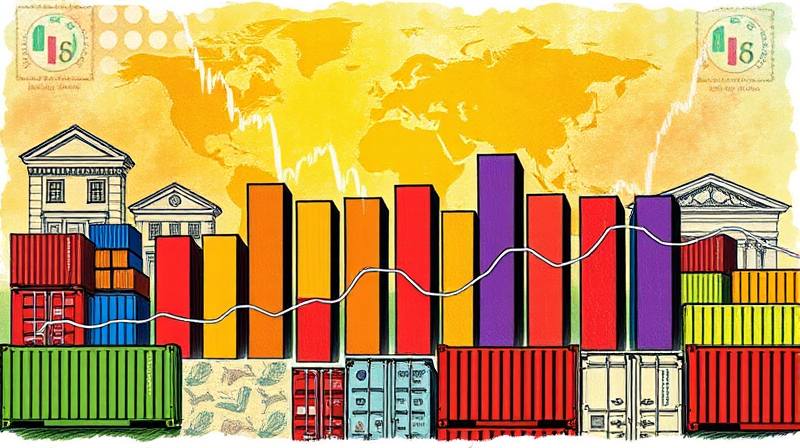
As 2025 unfolds, the technology sector is experiencing a robust rebound that transcends the traditional measure of corporate earnings. While quarterly profits remain a cornerstone of investor sentiment, a confluence of structural, strategic, and human capital factors is at play. From breakthroughs in artificial intelligence to a renewed focus on cybersecurity, stakeholders across industries are recognizing that the story of tech’s resurgence is far more nuanced than simple financial metrics.
In this article, we explore the multifaceted forces fueling the technology market recovery, providing insights into how innovation, talent, and global dynamics are reshaping the landscape.
One of the most compelling drivers of the rebound lies in the rapid advancement of AI and supporting hardware. The semiconductor industry, in particular, is poised for dramatic double-digit revenue growth in 2025, led by surging demand for generative AI chips. Innovations such as AI accelerators, specialized CPUs, GPUs, and data center components are redefining computational power and fueling enterprise edge computing.
These developments highlight how capital expenditure in next-generation technology extends beyond immediate profit expectations, signaling a long-term strategic commitment to digital transformation.
The bounce back in tech equities is accompanied by heightened volatility. Inflationary pressures, political risk in the United States, and fears of overvaluation amid an AI investment boom have introduced unpredictability. Yet, the resilience of leading technology firms is apparent in their ability to pivot strategies, address supply chain constraints, and maintain investment in research and development.
Market narratives now factor in broader macroeconomic themes, reflecting a holistic approach to valuation that weighs risk management, policy outlook, and innovation trajectories equally against earnings reports.
The digital skills gap remains one of the most critical challenges for the industry. A persistent digital skills gap has spurred companies to overhaul talent strategies, emphasizing upskilling, reskilling, and skills-based recruitment. Automation and AI integration require specialized competencies, prompting employers to collaborate with educational institutions and training platforms.
As large-scale layoffs abate, the job market is forecasted to rebound sharply, with openings in green technology, cybersecurity, and machine learning leading the charge. Over 75% of tech professionals remain optimistic about their career prospects in this dynamic environment.
Escalating threats have propelled cybersecurity to the top of corporate agendas. The global cost of cybercrime is expected to reach $10.5 trillion by year-end, underscoring the scale of substantial non-earnings technology investments in risk mitigation and security infrastructure. Companies are allocating significant resources to threat detection, incident response, and compliance, recognizing that safeguarding digital assets is as vital as driving revenue growth.
This elevated focus on security is shaping product roadmaps and vendor relationships, with cybersecurity considerations embedded in every strategic decision across the value chain.
As U.S. tech stocks grapple with policy uncertainty and valuation scrutiny, international markets are showing relative resilience. European equities, for example, saw 59% of companies in the STOXX 600 beat earnings estimates in Q1 2025. This dynamic has encouraged a more diversified investment approach, with global funds reallocating capital toward emerging tech markets in Asia and Europe.
Investors are increasingly balancing domestic exposure with international opportunities, seeking stability and growth potential outside crowded U.S. valuations. This transformative global market realignment reflects a new era of cross-border collaboration and competitive positioning.
Despite the robust momentum, the sector faces notable headwinds. Political uncertainty and concerns over speculative valuations persist, especially in U.S. markets. The scramble for talent continues to drive up wages, delay project timelines, and force companies to rethink retention strategies.
Moreover, debates over AI ethics, bias mitigation, and regulatory frameworks could slow the pace of full-scale deployment, requiring industry leaders to engage proactively with stakeholders and policymakers.
The 2025 tech rebound demonstrates that the sector’s revival is powered by innovation, human capital, and strategic diversification as much as by earnings. Businesses and investors who adopt a holistic view—embracing cutting-edge specialized digital skills, sustainable practices, and global perspectives—will be best positioned to thrive.
By aligning investment with transformative trends—AI, cybersecurity, sustainability, and international growth—stakeholders can help ensure that the tech industry’s resurgence is resilient, inclusive, and forward-looking. The story of the rebound is not just about profits; it is a testament to human ingenuity, adaptability, and the unyielding drive to shape a more connected and secure future through cutting-edge specialized digital skills.
References













